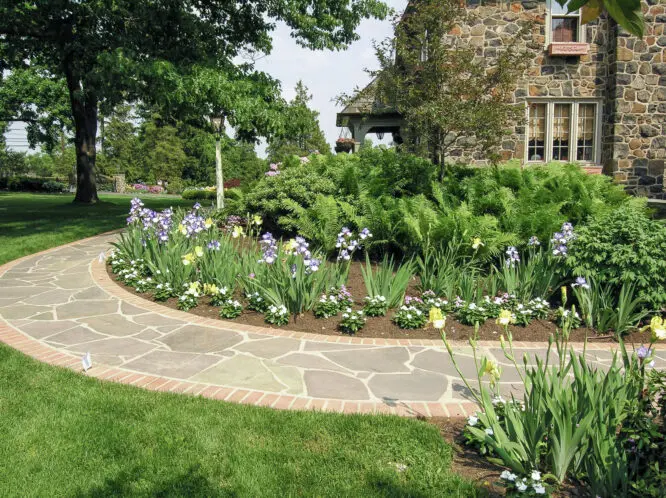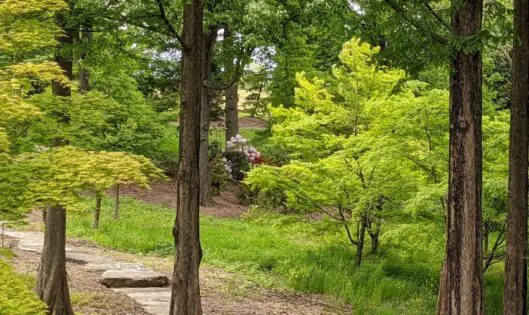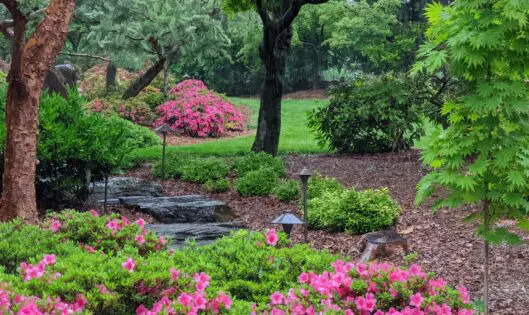The Gardener's Journal
Planning a Garden That Will Last

Creating a landscape of lasting beauty requires thoughtful planning, skillful implementation and care. A well-planned garden is also a smart investment in long-term value. With good planning, you avoid the pitfalls that result in short-sighted and costly garden “makeovers,” including perhaps the greatest loss: the time it costs to re-grow a garden to graceful maturity.
Here are some steps to help you invest your time and resources wisely.
Garden planning tips to consider
1. Consider your environment. A successful garden relates well to the unique characteristics of its setting. Climate, water, wind, weather, shade and sun, slopes, soils, nutrients, suitable plant types and surrounding structures are all crucial elements to address in a solid garden plan.
2. Find inspiration. A guiding concept helps integrate the plan. What experiences have brought rest to your soul and joy to your heart? Is there a message you’d like to communicate? A professional designer will work with you to crystallize your garden dreams into an executable plan.
3. Determine the purpose and scale. Imagine what your ideal garden will look like from your window. Understand the problems you need to solve and the goals you hope to achieve; be able to articulate your reasons for wanting a garden. Are you seeking privacy from neighboring homes or a more beautiful spot in which to relax or entertain guests? Will this design meet your needs in the future and make the most of your space? Answering questions like these will help to determine the best design choices for your unique situation.
4. Make seasonal decisions. What will your garden look like during winter? Consider how much of your garden to allot to a brief summer season versus sustainable, year-‘round beauty. Striking a balance that meets your goals is the ideal.
5. Begin with strong foundations. Foundations that will last through the changes of season and weather need to be placed at the beginning of each part of a lasting garden space. For example, sufficient base preparations under patios or structural supports for retaining walls are one type of consideration. Other examples include allowing access under and through permanent structures for future sound or lighting wires, and the preparation of soils to allow the growth and survival of proposed plants.
6. Respect the movement of water. Managing the flow of rain water away from the home and through the landscape is often overlooked, but if not handled well, can have painful consequences.
7. Plant for tomorrow. Since plants keep on growing, organizing a community of plants to grow in graceful relationship with one another and the people who share the garden space is necessary to sustainable success. Good design involves both the placement of plants with growth in mind, and the selection of an achievable maintenance program. Planning is critical, because a well-planned garden will save the frustration of frequent and costly renovations.
8. Care for your investment. Skilled gardeners learn how to properly “coach” a garden to allow it to flourish naturally. Quarterly pruning for health and guidance is recommended. Pruning techniques allow for a variety of “finishes” to plants, ranging from wild to formal. Knowledgeable pruning preserves future growth and provides long-lasting beauty, while managing size and appearance. Over time, the quality of the maintenance provided is the most important factor in determining a garden’s value.
At Hanselman Landscape, we are dedicated to forging long-term relationships and producing successful gardens, because we believe the two go hand in hand. Our clients partner with us to create gardens that build value and bring natural beauty into their lives every day. We invite you to join us in this pursuit!
OUR GARDEN DESIGN PROCESS

Explore
Share your goals, ideas, and project budget and we will begin to survey and plan your garden

Design
We will consider all your primary view perspectives, both inside and out as we design your garden

Build
Your garden dream will begin to take shape by the hands of our highly skilled craftsmen and landscapers

Enjoy
Your garden dream will begin to take shape by the hands of our highly skilled craftsmen and landscapers



